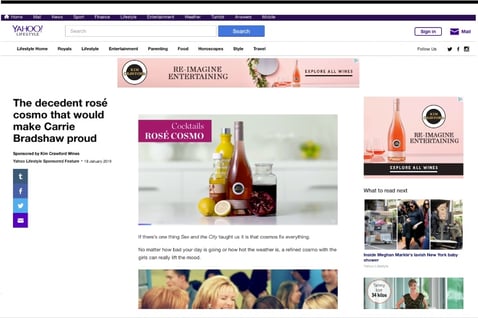
First Published: 20 April, 2020
As adoption of Native Advertising matures, brands need to stand out for the right reasons and maximise their investment. To do this, it's imperative marketers have a clear understanding of what Native Advertising is and the various product types that fall within it.
Here Verizon Media breaks down product definitions for common native knowledge.
In terms of an overall definition of Native Advertising, we have refined the wording as per the below:
Native Advertising should complement the natural design, location and behaviour of the environment in which it exists, through content which provides a non-disruptive and relevant consumer experience to the context within which the ad resides.
A critical aspect of Native Advertising is an obvious disclosure that these are adverts must be very clear and prominent. At no stage can these adverts be seen to be misleading in any way by not being clearly labelled as being sponsored content. The landing page must match the native advertising ad, albeit highly relevant to the environment and context. The consumer must be able to clearly distinguish between what is editorial content and what is native advertising content.
Native Advertising requires two elements: Form and Function. Form is how the ad looks when integrated with the content surrounding it, while Function is how the ad behaves similarly to the content surrounding it.
In terms of the specific product definitions, we've narrowed down to three native product types, as per recommendations from the IAB globally (IAB Native Advertising Playbook 2.0, May 2019):
These ad types are positioned within content, product or social feeds. In-Feed ads will closely mimic or replicate the look and feel of the editorial content - and In-Content ads will sit in-between or below the publisher content.

This ad type usually sits below (and sometimes adjacent to) editorial content. Whilst it’s highly relevant to the context and environment, it is clearly external content and upon clicking, users are taken to a different site. The format can be articles, products or video.

This is advertorial content which exactly matches the format, look and feel of the publisher’s editorial. Whilst it is relevant to the context, it must clearly be labelled for consumers as being sponsored content.

Native is an increasingly important route to reach consumers in the New Zealand market. As more budgets shift towards digital channels it is important the industry develops a common vocabulary so we can build best-practice to benefit brands and customers
Article provided by Verizon Media.

Contact us if you have any suggestions on resources you would like to see more of, or if you have something you think would benefit our members.
Get in TouchSign up to receive updates on events, training and more from the MA.
